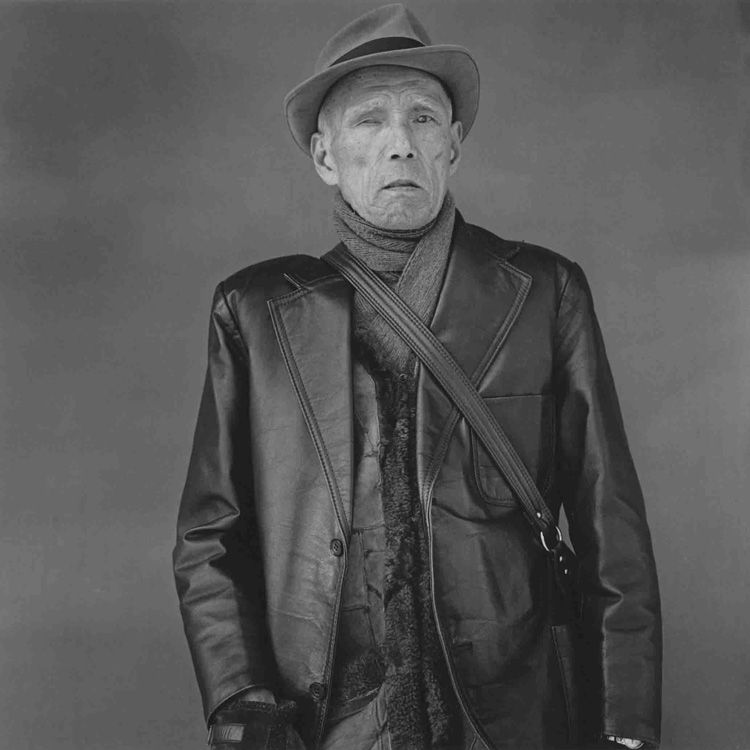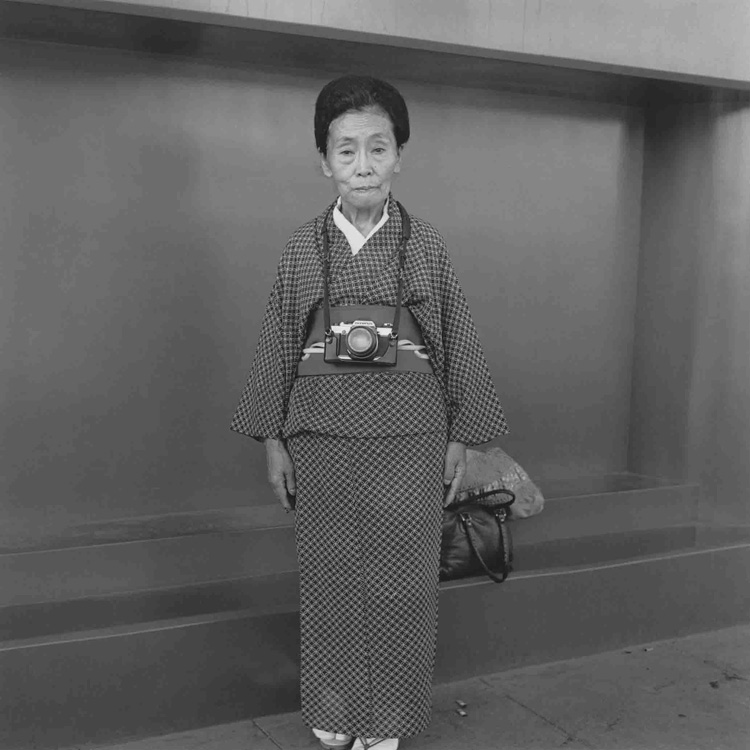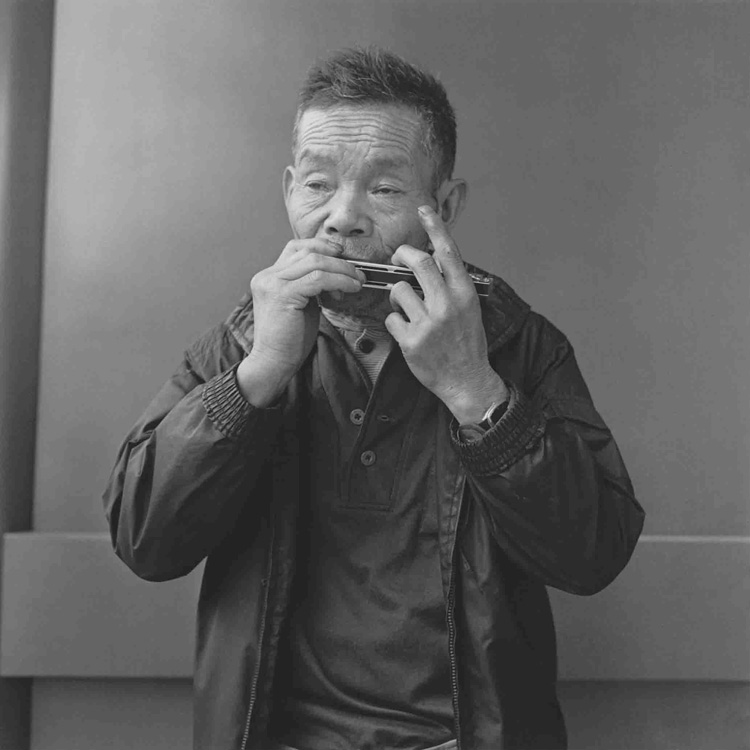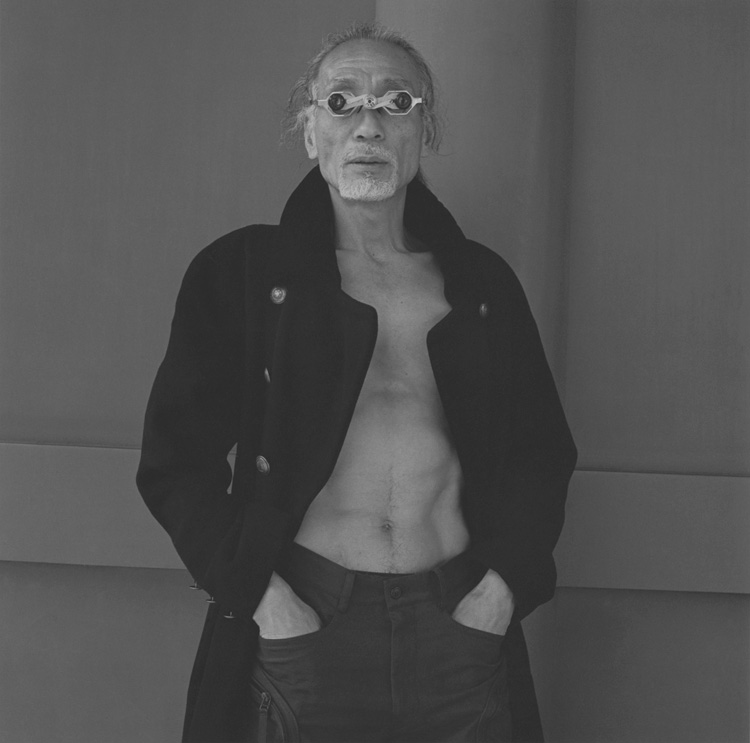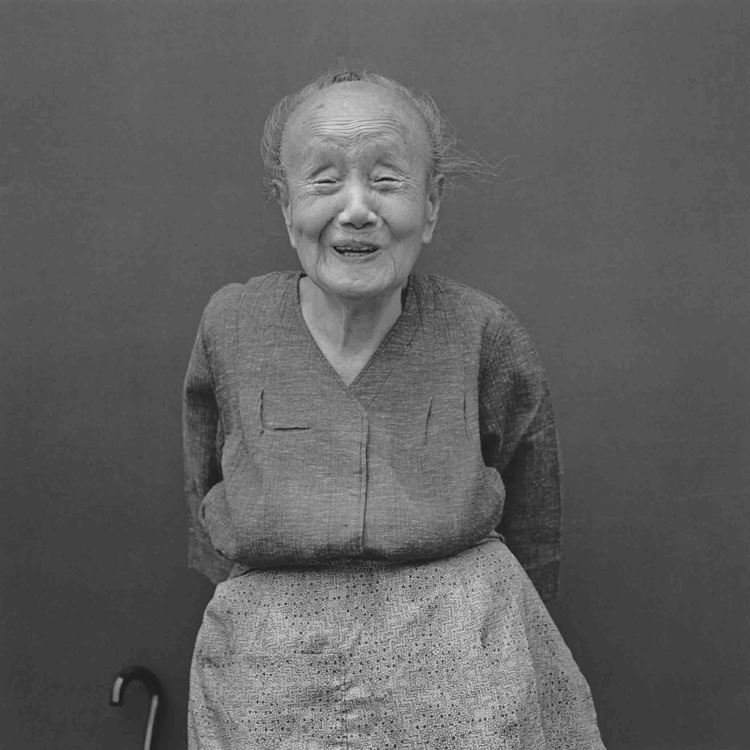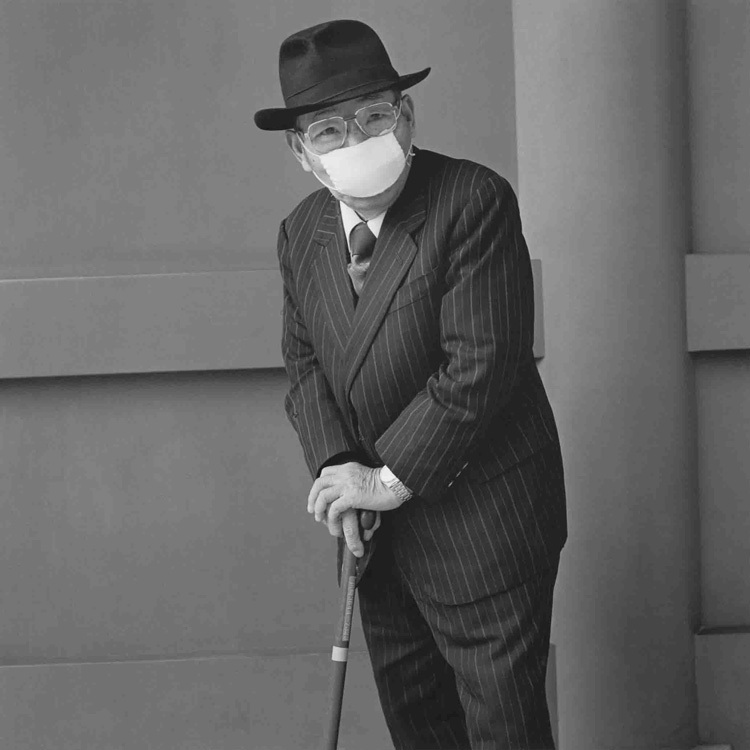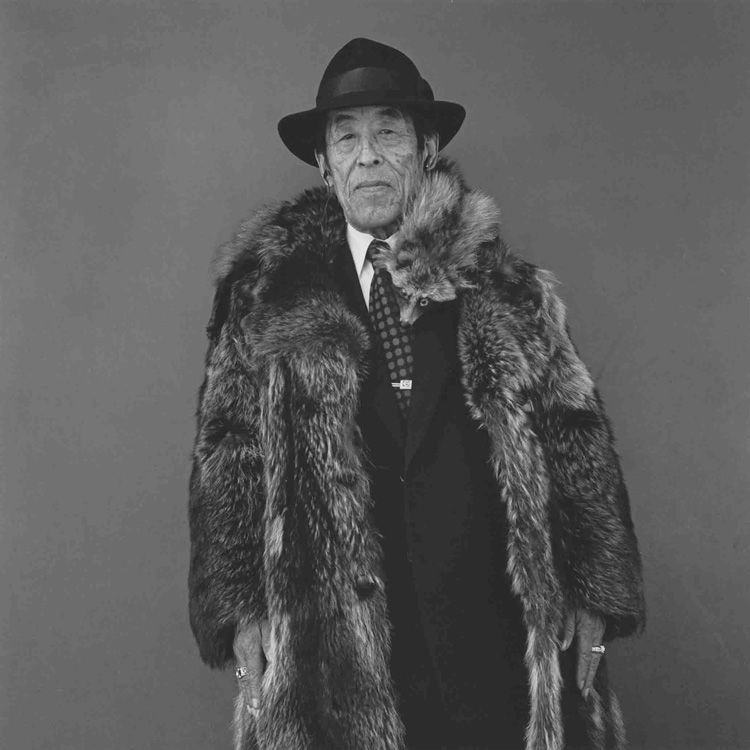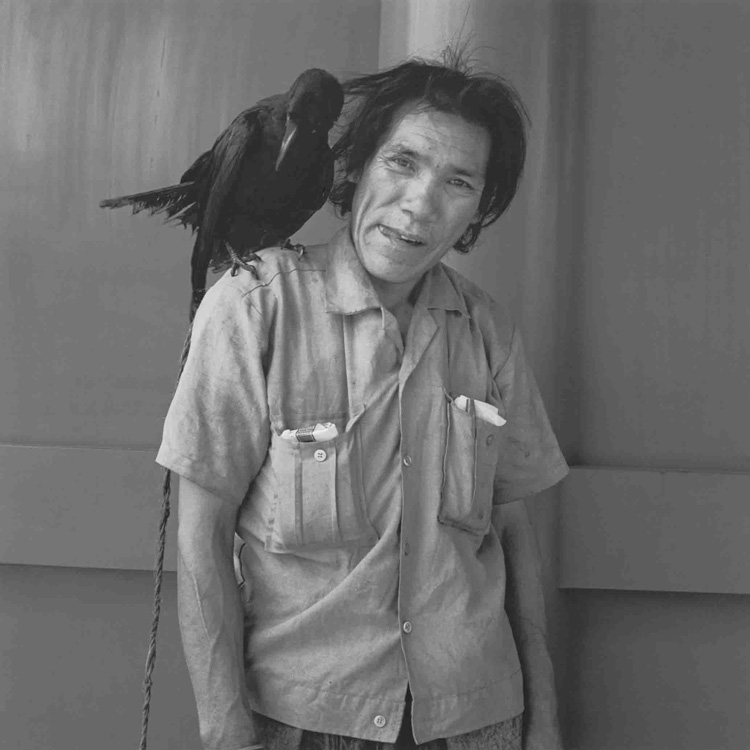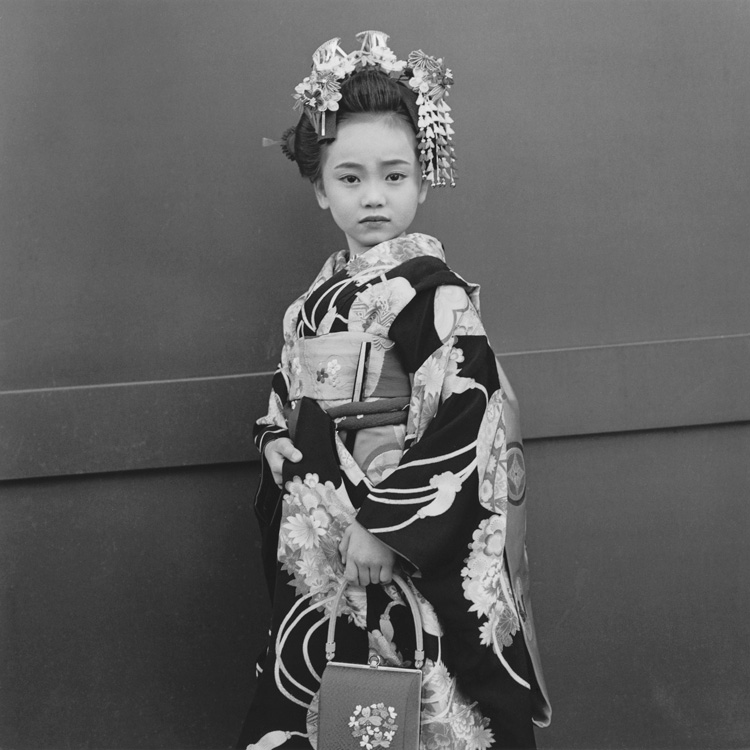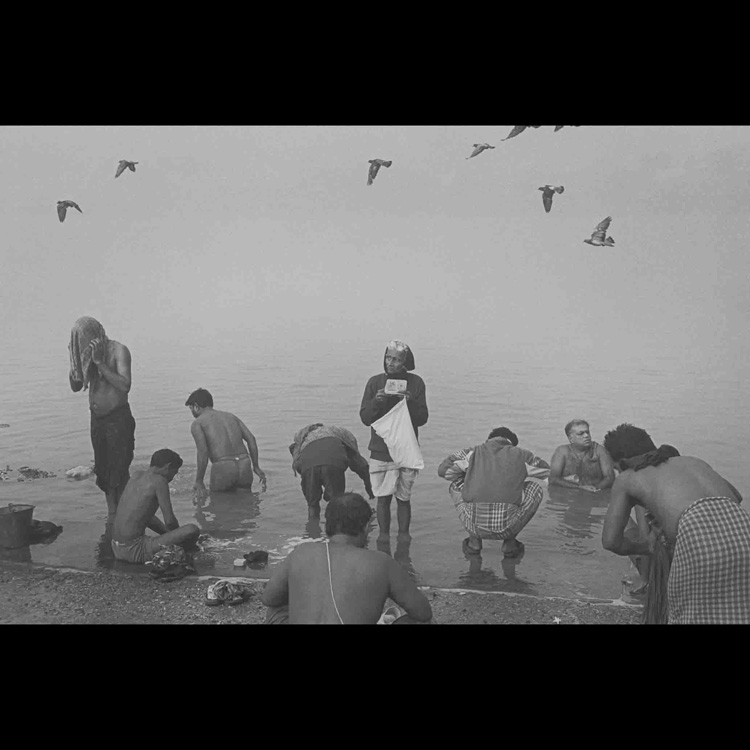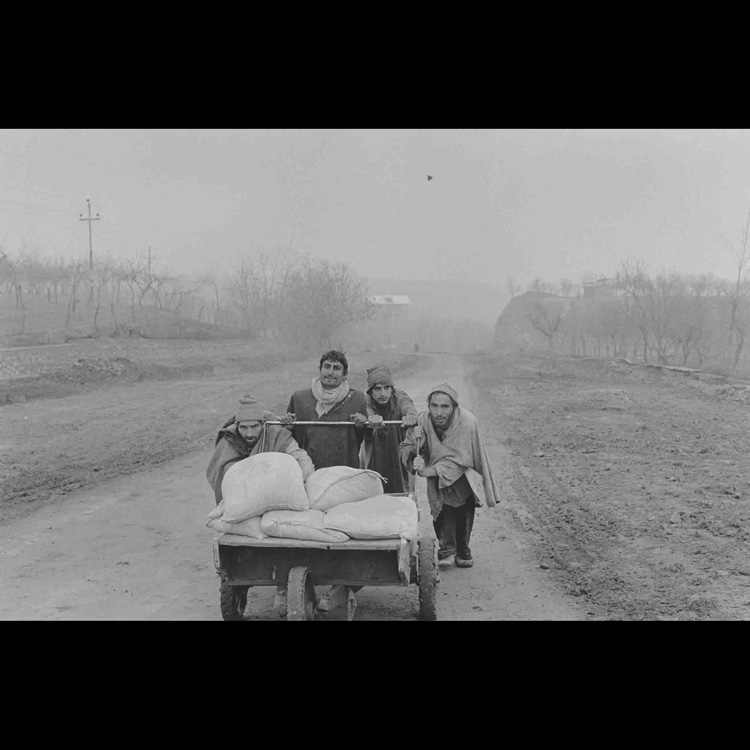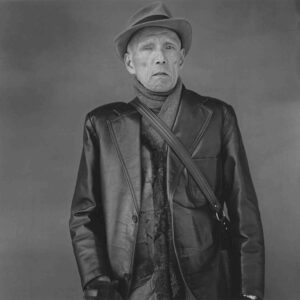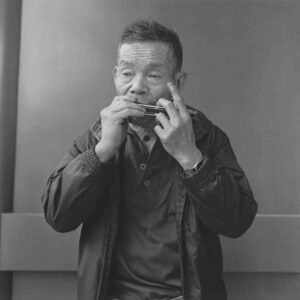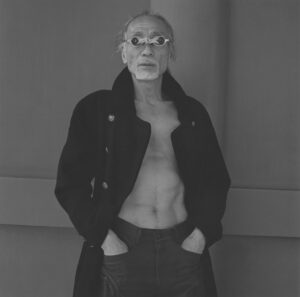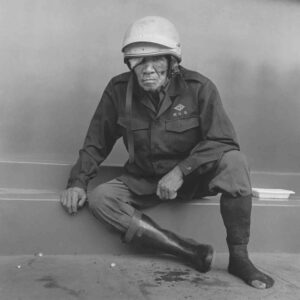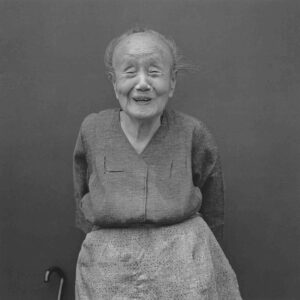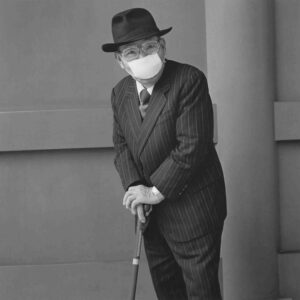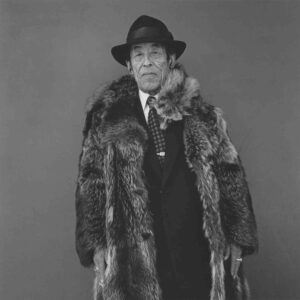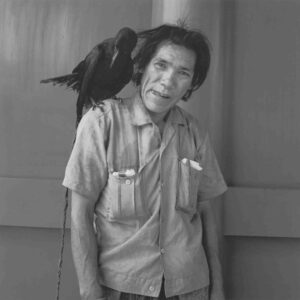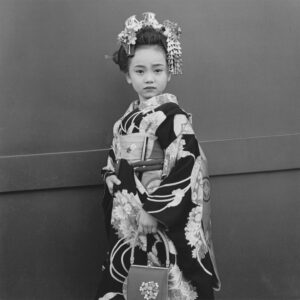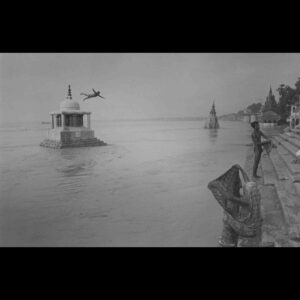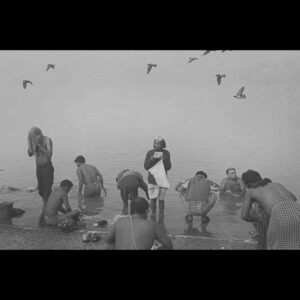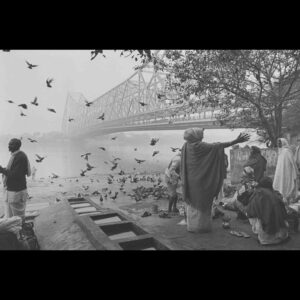Your cart is currently empty!
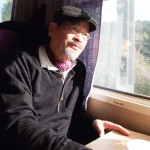
Hiroh KIKAI
Japanese
Place of Birth
Daigo Sagae, Yamagata Prefecture
Place of Residence
Tokyo, Japan
Hiroh Kikai 鬼海 弘雄
(18 March 1945 – 19 October 2020) was a Japanese photographer best known within Japan for four series of monochrome photographs: scenes of buildings in and close to Tokyo, portraits of people in the Asakusa area of Tokyo, and rural and town life in India and Turkey.
Trained philosopher and self-taught photographer became a major figure in the world of Japanese photography, in 2004 with his book Persona won both the 23rd Domon Ken Awards and the annual prize of the Photographic Society of Japan “PSJ”. In 2009, ICP and Steidl co-published Asakusa Portraits, a much larger compilation of his Persona series, and in 2019 before his death Chikuma Shobo published a collection of his Asakusa portraits taken from 2005 to 2018 under the name PERSONA The Final Chapter.
Hiroh Kikai since his years of a young adult from his experience of working as a public servant knew that he wasn’t cut out for the business world, hence he chose philosophy as his major as it was the field furthest from the practical sciences, yet as he said his reason for entering philosophy was misguided, but meeting Professor Fukuda was the best thing that happened to him at college. Kikai used to talk about how influential professor Fukuda was in his form of thinking, “Fukuda used to say that “philosophy is a system that makes everybody enjoy thinking. I found it all so interesting as a young man, and I steeped myself in his teachings”. It was professor Fukuda, who loaned Kikai the money for his first and only Hasselblad with standard lenses that he used for over 40 years as a photographer.
When he graduated from college the real world was his ultimate playground, and he began to ponder about the path he could take to express something about that world. To earn his living, he worked as a truck driver and a factory worker, while hunting for his path accidentally he came across a photography book by Diane Arbus.
Up until then he said “I had thought of photography as having a more limited vocabulary as compared with films, but Arbus’s photographs shocked me. I was surprised that there were photos out there that I didn’t grow tired of looking at. Her images sent a shiver down my spine”. He decided to be a photographer and took a job in a professional darkroom, and on his days off he would take short trips, and that’s how he ended up on the streets of Asakusa. He described his feeling for Asakusa as having an affection for it from the start because the people there reminded him of those in his hometown and in the factories where he once worked. Kikai started taking pictures of people in Asakusa in 1973 and after working in the darkroom for three years, he decided to become a professional photographer and quit his job, but the economics didn’t work out for him and it was clear that he could not survive as a photographer, so he went back to blue-collar jobs, and taking pictures on his days off. As he said “If I had given up photography at that point, my soul would have died”.
And regardless of whether or not he could earn a living with photography, he understood his need to keep taking pictures of people; for Kikai humanity became his essential subject, as he said “a human being is a mysterious and strange organism. As a photographer, I take pictures as a way of paying respect to people”. For Kikai the camera not only captures the subject but also the soul of the photographer. “As I am a photographer, I admonish myself that one can deceive with words, but not with pictures”.
For his Persona series, for over 40 years Hiroh Kikai photographed striking people in front of Sensoji Temple in Tokyo’s Asakusa district. Asakusa is still today a thriving pilgrimage center and popular pleasure district. For his portraits, Kikai strolled around Asakusa so many times, and asked himself “why I’ve separated myself from contemporary society to do such an “unproductive” kind of thing”. That exact question made it possible for him to take his portraits showing his intentional timekeeping by photographing the same person years apart, or the flux of individuality and the human energy that’s been accumulating there for ages, an impressive testimony to this Asakusa humanity revealing new things with each viewing.
Luigi Clavareau – in)(between gallery
Solo exhibitions/Expositions personnelles
2019 “PERSONA – Final Chapter”, The Nara City Museum of Photography, Nara Japan, 2019
2018 Persona. See + gallery (Beijing)
2017 Persona. See + gallery (Beijing)
2015 Tokyo Voyage à Asakusa. Société d’Encouragement pour l’Industrie Nationale, Paris 6, 2015
2014 Retratos de Asakusa. Tabacalera, Promocion del Arte (Madrid)
2014 India 1987-2011. Ehime Prefectural Museum (Matsuyama, Ehime)
2013 Asakusa Portraits & India, in)(between record vol 5, in)(between gallery, Paris, France, 2013
2013 Persona. Miyazaki Prefectural Art Museum (Miyazaki City)
2012 Persona (+India, Anatolia). Yamagata Museum of Art (Yamagata City)
2012 Persona (+India, Anatolia). Itami City Museum of Art (Itami, Hyogo)
2011 Tokyo Portraits. Tokyo Metropolitan Museum of Photography (Meguro, Tokyo)
2004 Persona, The Third Gallery Aya, Osaka, Japan
2004 Persona. Domon Ken Photography Museum (Sakata, Yamagata)
2002 Persona (II). Manggha (Krakow, Poland)
1999 Persona (I). Manggha (Krakow, Poland)
1998 Indo kikō | India travelogue, Shōmeidō Gallery, Kodaira, Japan
1993 Ecce Homo, Robert Koch Gallery, San Francisco, USA
1990 Prix Ina Nobuo décerné par Nikon Salon pour la série Kanshō : Machi no katachi |Meditation : Town shapes, Japan
1989 Hitachi Collection of Contemporary Japanese Photography, Center for Creative Photography, Tucson, Arizona, USA
1988 Prix Ina Nobuo décerné par Nikon Salon pour la série Ōtachi no shōzō – Sensōji keidai | Portraits of kings in the grounds of Sensō-ji, Japan
1988 Ōtachi no shōzō – Sensōji keidai | Portraits of kings in the grounds of Sensō-ji, Ginza Nikon Salon, Tokyo, Japan
1984 Indo kikō | India travelogue, Doi Photo Plaza, Tokyo & Art Plaza, Fukuoka & Gallery Antomeru, Japan
1983 Nagi : Machinaka no kōkei | Calm : Town scenes, Konishiroku Photo Gallery, Tokyo, Japan
Group Exhibitions/Expositions collectives
2008 Heavy Light – Recent Photography and Video from Japan, International Center of Photography, New York, USA
2008 Sander’s Children Danziger Projects, New York, USA
2007 Tokyo Labyrinth / with Yoshiharu Sekino, Shōmeidō Gallery, Kodaira, Japan, 2007
2006 Berlin–Tokyo, Neue National galerie, Berlin, Allemagne 2006
1997 Shashin toshi Tōkyō | Tokyo – City of Photos, Exposition collective avec Takanobu Hayashi, Hiroh Kikai, Ryūji Miyamoto, Daidō Moriyama, Shigeichi Nagano, Ikkō Narahara, Mitsugu Ōnishi, Masato Seto, Issei Suda, Akihide Tamura, Tokuko Ushioda, and Hiroshi Yamazaki. Tokyo Metropolitan Museum of Photography, Tokyo, Japan
1997 Shashin wa nani o katareru ka | What can photographs say? Tokyo Metropolitan Museum of Photography, Tokyo, Japan
1997 Shashin wa nani o katareru ka | What can photographs say?
1997 Osaka Umeda Canon Salon, Fukuoka Canon Salon, Nagoya Canon Salon, Sapporo Canon Salon, Sendai Canon Salon, Japan, 1997
1990 Nyū dokyumentsu 1990 | New Documents 1990, Museum of Modern Art, Toyama, Japan
————————————————-
Books & Publications/Livres & Publications
2019 PERSONA: The Final chapter, 2005-2018, Tokyo: Chikumashobo, 2019
2017 India 1979-2016. Tokyo: Crevis, 2017
2016 Tokyo View. Kyoto: Kazetabi-sha, 2016
2014 Seken no hito (“The Public”). Tokyo: Chikumashobo, 2014
2011 Anatolia. Tokyo: Crevis, 2011
2011 Tokyo Portraits. Tokyo: Crevis, 2011
2008 Asakusa Portraits. New York: International Center of Photography; Gottingen: Steidl, 2008
2007 Labyrinthos. Tokyo: Soshisha, 2007.
2005 Persona. Tokyo: Soshisha, 2005
2005 In-between, 8: Hiroh Kikai, Portugal, Malta. Tokyo: EU-Japan Fest Japan Committee, 2005
2003 Persona. Tokyo: Soshisha, 2003
2001 Shanti: Children of India. Tokyo: Fukuinkan Shoten, 2001
1999 Tokyo Labyrinth. Tokyo: Shogakukan, 1999
1996 Ya-Chimata: Dtachi no Liro (“Yachimata: A Gallery of Kings). Tokyo: MisuzuShobo,1996
1992 India. Tokyo: Misuzu Shobo, 1992
1987 Ecce Homo: Portraits ofKings. Yokohama: Yatare, 1987
Essay collections / Collections d’essais
2016 Kutsuzoko no Herikata (“How Heels Wear Down”). Tokyo: Chikumashobo
2015 Dare 0 mo Sukoshi Suki ni naru Hi: Memekuri Bobiroku (“Days When I Come to Like Anybody a Litde: An Aide-memoire of Sights). Tokyo: Bungeishunju
2012 Me to KtlZe no Kioku: Shashin 0 Meguru Ese (“Memories of Eyes and the Wind: Essays on Photographs). Tokyo: Iwanami Shoten
1999 Indoya Gassan (“India and Mt Gassan”). Tokyo: Hakusuisha
————————————————-
Permanent collections/Collections permanentes
in)(between gallery, Paris, France
Tokyo Metropolitan Museum of Photography, Tokyo, Japan
Museum of Modern Art, Toyaman, Japan
Domon Ken Photography Museum, Sakata, Yamagata, Japan
Neue Nationalgalerie, Berlin, Germany
Center for Creative Photography, University of Arizona, Tucson, USA
Hood Museum of Art, Dartmouth College, Hanover, New Hampshire, USA
Museum of Fine Arts, Houston, USA
International Center of Photography, New York, USA

